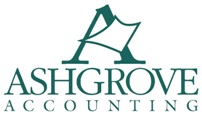Profit from loyal customer 5 ways
Never confuse a loyal customer with a satisfied one. A satisfied customer can be fickle in their motivation and desire, while a loyal customer will be your strongest advocate. A satisfied customer will leave your business for a better deal at your competitor, or when you make a mistake. A loyal customer will forgive mistakes and will be more effective than the best marketing campaign you could design.
There are five ways you will profit handsomely from a loyal customer. Watch your accounting balance sheet become stronger every month when your focus in on loyalty.
- Base profit – That is, from every product or service you sell. With a good bookkeeping system, you should know how you compare to your industry peers.
- Increase frequency of purchases – Loyal customers will buy more from you over time. Do you know what your average sales per customer are each month?
- Reduced costs – A loyal customer doesn’t need their hand held when they enter your business; they already get how you operate.
- Referrals – Probably the hardest thing to account for, but also the most powerful. Loyal customers will tell their friends and family how delighted you’ve made them.
- Price Premium – Loyal customers won’t shop around and appreciate the value proposition you’ve designed into your product/service. Because of that, you can (and should) charge a premium for it.
Now just compare this with the idea of offering a coupon, Groupon, or other discount. It becomes completely unnecessary.
There is a simple measure you need to use, to determine just how many of your customers are loyal. If you’d like a copy, please send me an email and I’ll forward a copy of the survey question(s).
Posted in: Blog
Leave a Comment (0) →
